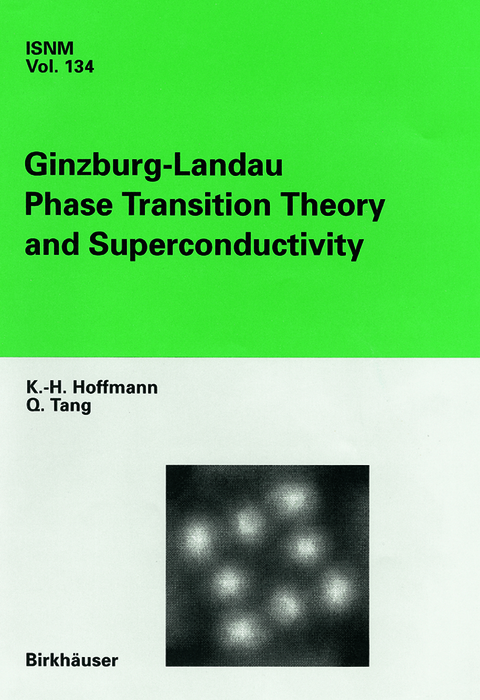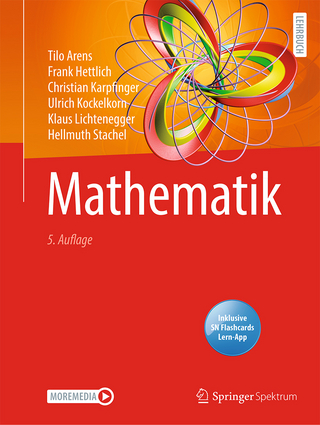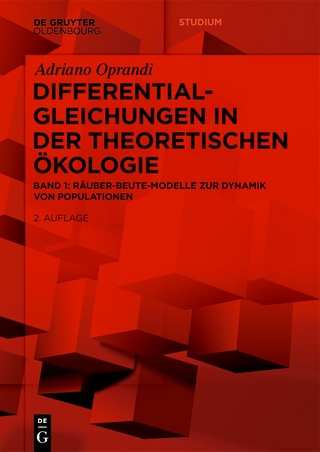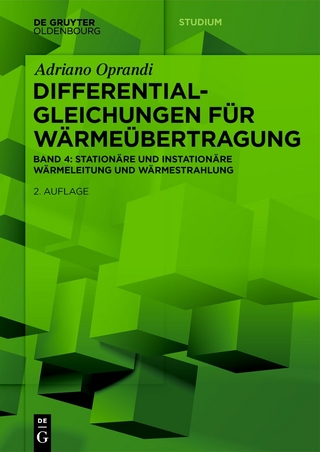
Ginzburg-Landau Phase Transition Theory and Superconductivity
Springer Basel (Verlag)
978-3-0348-9499-9 (ISBN)
1 Introduction.- 1.1 Brief history.- 1.2 The G-L phenomenological theory.- 1.3 Some considerations arising from scaling.- 1.4 The evolutionary G-L system - 2-d case.- 1.5 Exterior evolutionary Maxwell system.- 1.6 Exterior steady-state Maxwell system.- 1.7 Surface energy, superconductor classification.- 1.8 Difference between 2-d and 3-d models.- 1.9 Bibliographical remarks.- 2 Mathematical Foundation.- 2.1 Co-dimension one phase transition problems.- 2.2 Co-dimension two phase transition problems.- 2.3 Mathematical description of vortices in ?2.- 2.4 Asymptotic methods for describing vortices in ?2.- 2.5 Asymptotic methods for describing vortices in ?3.- 2.6 Bibliographical remarks.- 3 Asymptotics Involving Magnetic Potential.- 3.1 Basic facts concerning fluid vortices.- 3.2 Asymptotic analysis.- 3.3 Asymptotic analysis of densely packed vortices.- 3.4 Bibliographical remarks.- 4 Steady State Solutions.- 4.1 Existence of steady state solutions.- 4.2 Stability and mapping properties of solutions.- 4.3 Co-dimension two vortex domain.- 4.4 Breakdown of superconductivity.- 4.5 A linearized problem.- 4.6 Bibliographical remarks.- 5 Evolutionary Solutions.- 5.1 2-d solutions with given external field.- 5.2 Existence of 3-d evolutionary solutions.- 5.3 The existence of an ?-limit set as t ? ?.- 5.4 An abstract theorem on global attractors.- 5.5 Global atractor for the G-L sstem.- 5.6 Physical bounds on the global attractor.- 5.7 The uniqueness of the long time limit of the evolutionary G-L so-lutions.- 5.8 Bibliographical remarks.- 6 Complex G-L Type Phase Transition Theory.- 6.1 Existence and basic properties of solutions.- 6.2 BBH type upper bound for energy of minimizers.- 6.3 Global estimates.- 6.4 Local estimates.- 6.5 The behaviour of solutions nearvortices.- 6.6 Global ?-independent estimates.- 6.7 Convergence of the solutions as ? ? 0.- 6.8 Main results on the limit functions.- 6.9 Renormalized energies.- 6.10 Bibliographical remarks.- 7 The Slow Motion of Vortices.- 7.1 Introduction.- 7.2 Preliminaries.- 7.3 Estimates from below for the mobilities.- 7.4 Estimates from above for the mobilities.- 7.5 Bibliographical remarks.- 8 Thin Plate/Film G-L Models.- 8.1 The outside Maxwell system - steady state case.- 8.2 The outside field is given - evolutionary case.- 8.3 The outside field is given - formal analysis.- 8.4 Bibliographical remarks.- 9 Pinning Theory.- 9.1 Local Pohozaev-type identity.- 9.2 Estimate the energy of minimizers.- 9.3 Local estimates.- 9.4 Global Estimates.- 9.5 Convergence of solutions and the term $$frac{1}{{varepsilon ^2 }}int_Omega {(left| {psi _varepsilon } right|^2 - 1)^2 }$$.- 9.6 Properties of ?*, A*.- 9.7 Renormalized energy.- 9.8 Pinning of vortices in other circumstances.- 9.9 Bibliographical remarks.- 10 Numerical Analysis.- 10.1 Introduction.- 10.2 Discretization.- 10.3 Stability estimates.- 10.4 Error estimates.- 10.5 A numerical example.- 10.6 Discretization using variable step length.- 10.7 A dual problem.- 10.8 A posteriori error analysis.- 10.9 Numerical implementation.- 10.10 Bibliographical remarks.- References.
| Erscheint lt. Verlag | 23.10.2012 |
|---|---|
| Reihe/Serie | International Series of Numerical Mathematics |
| Zusatzinfo | XII, 384 p. |
| Verlagsort | Basel |
| Sprache | englisch |
| Maße | 155 x 235 mm |
| Gewicht | 602 g |
| Themenwelt | Mathematik / Informatik ► Mathematik ► Analysis |
| Mathematik / Informatik ► Mathematik ► Wahrscheinlichkeit / Kombinatorik | |
| Naturwissenschaften ► Physik / Astronomie ► Elektrodynamik | |
| Naturwissenschaften ► Physik / Astronomie ► Optik | |
| Schlagworte | Calculus • Ingenieurwissenschaften • London equation • Meissner effect • Model • Modeling • Numerical analysis • Numerische Analysis • partial differential equation • Superconductor • Theoretische Physik • Thin film |
| ISBN-10 | 3-0348-9499-6 / 3034894996 |
| ISBN-13 | 978-3-0348-9499-9 / 9783034894999 |
| Zustand | Neuware |
| Informationen gemäß Produktsicherheitsverordnung (GPSR) | |
| Haben Sie eine Frage zum Produkt? |
aus dem Bereich


